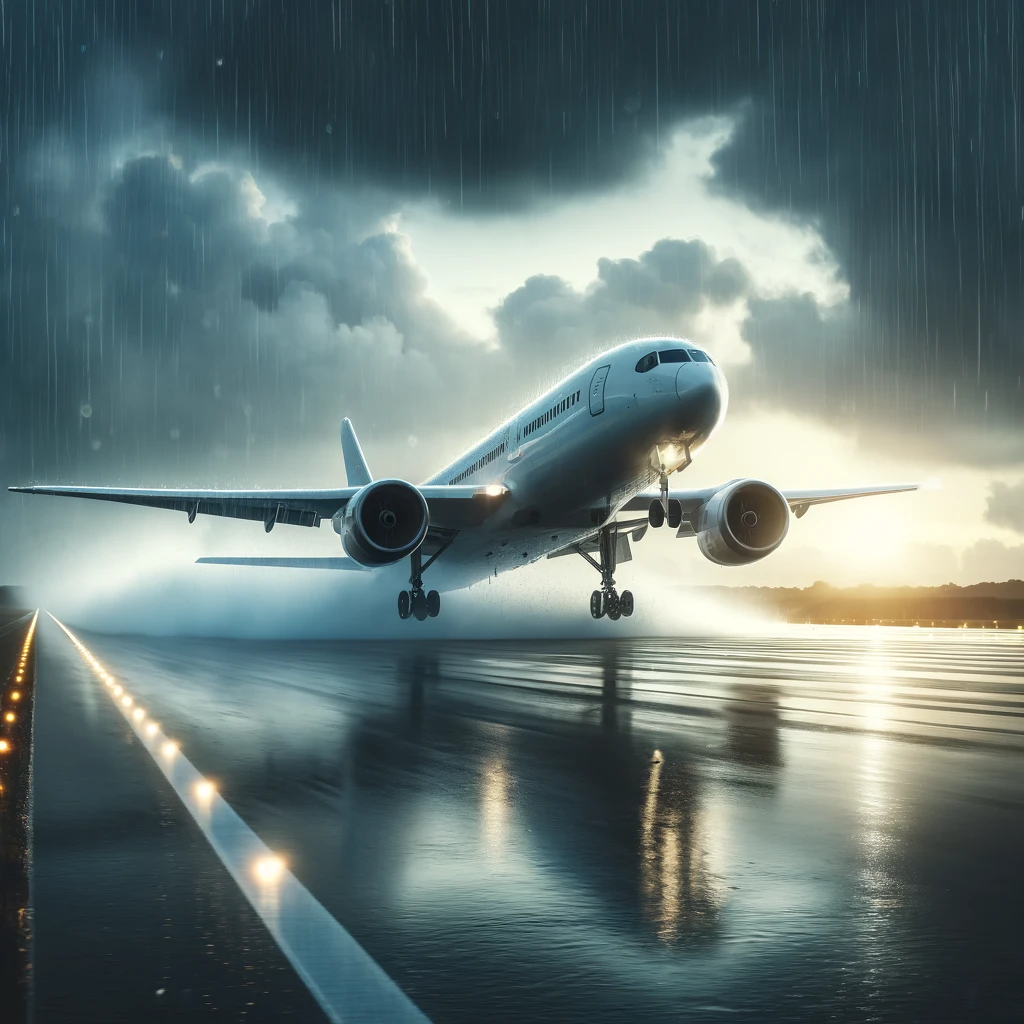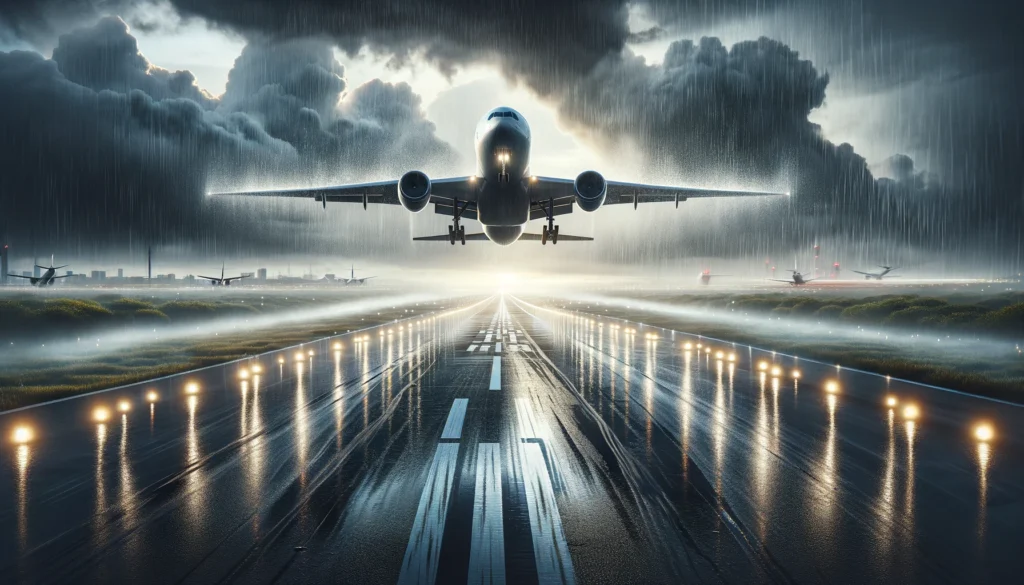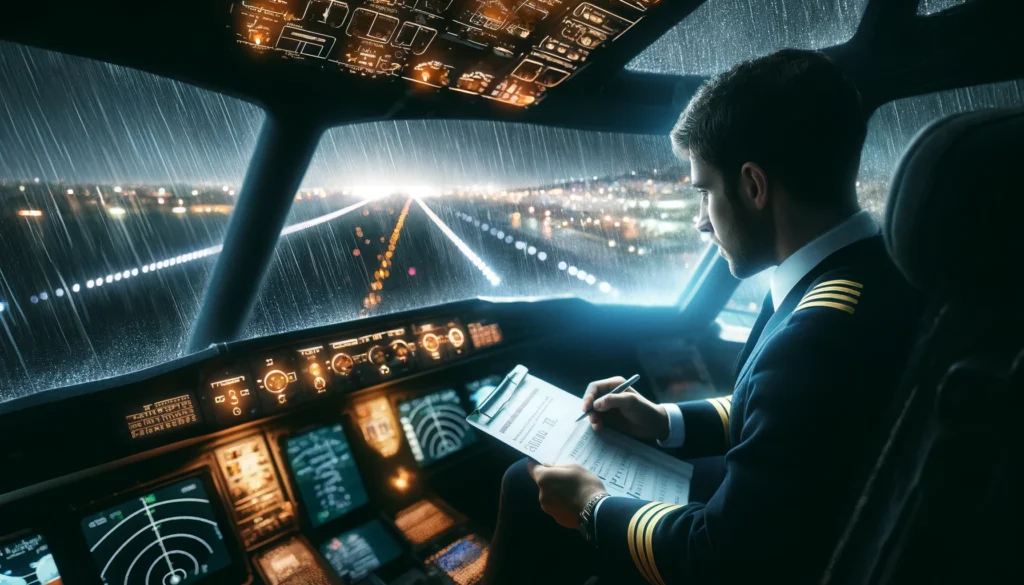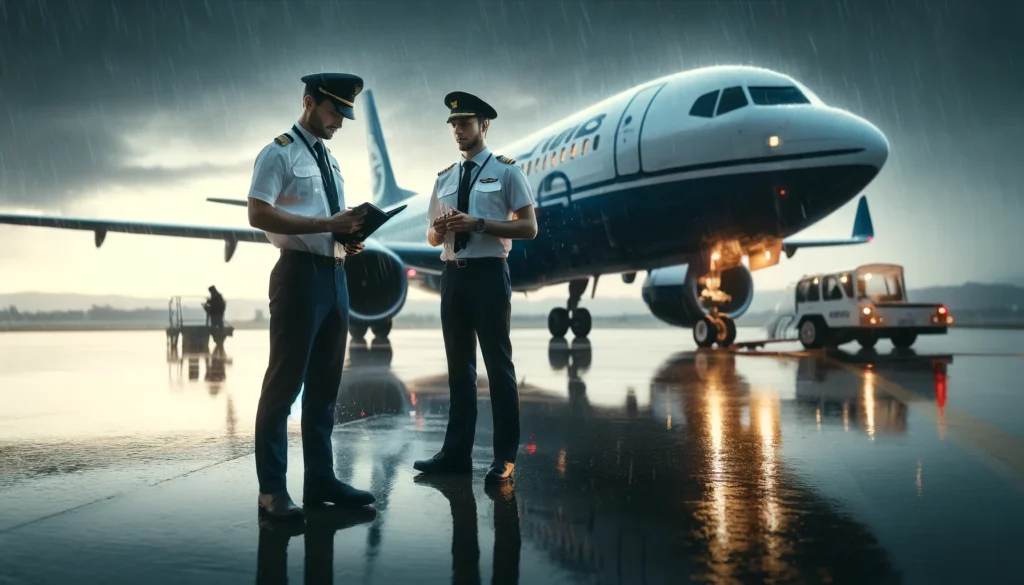Heavy rain is almost every traveler’s concern. In this detailed exploration, we answer the crucial question: Can Flights take off in Rain? Moreover, We will show the effect of rain on flight operations. Moreover will go in-depth into technologies that enable safe takeoffs. And deal with common safety questions and queries about flying in rainy weather.
The Impact of Rainfall on Aircraft Operations and Airports
Can Flight take off in Rain

Absolutely. Aircraft can deal with rain, provided by the level of design standards that guarantee the plane’s safety in different weather conditions. Nevertheless, the capability to taxi is determined by a couple of things, such as the intensity of the rain, the kind of aircraft, and the runway’s condition. Light to medium showers are not a big issue, but the heavy downpours become a delay as time is lost while re-assessments are being made.
Aircraft Design Features Suitable for Wet Climate
- Engine Protection: Engines can deal with some water without damaging themselves. Since they have advance features that expel extra water to avoid any critical loss of power.
- Hydrophobic Coatings: Important surfaces such as wings are coated with water-repellent treatments. They provide efficient airflow and prevent ice buildup that can affect plane operation.
- Enhanced Windshield Technology: Aircraft windshields fitted with high-power wipers and unique hydrophobic treatments so pilots can see clearly during heavy rain.
Technological Advancements Enabling Smooth and Safe Takeoffs in Rain
Advanced Weather Forecasting Tools

Present-day airframes are made not only to withstand rain but also to expect it. Pilots use advanced meteorological equipment to process real-time weather data inside the cockpit and make informed decisions about flight paths and takeoff windows. This technology, however, is what pilots use while flying around areas of severe weather, like heavy thunderstorms that may accompany rainfall.
Runway Technology and Maintenance
The condition of the runway is pivotal for safe takeoffs in the rain: The condition of the runway is crucial for safe takeoffs in the rain:
- Surface Engineering: The grooving of the runway surfaces helps improve water drainage and ensure water does not pool. This design provides the required traction for aircraft tires and, therefore, reduces the risk of hydroplaning.
- Drainage Systems: An effective drainage system is the key. Today future Airports focus on advanced drainage management systems that evacuate water from active runways rapidly, thereby keeping the surface from becoming too wet for operations.
Vital Safety Protocols for Rainy Takeoffs
Pre-Takeoff Safety Checks

Before departure, pilots perform comprehensive checks to ensure the aircraft is in the best shape. That encompasses verifying the performance of all hydraulic systems, checking the soundness of the aircraft’s skin and structures, and ensuring that all navigation aids are on board. These are precise and modified by the intensity of the rain.
Communication with Air Traffic Control
Yet, air traffic controllers are central to the safety of any plane journey, especially in rainy conditions. They observe weather patterns and allocate aircraft to the runway and taxiway. In the rainy season, they may make schedules to have more time between takeoffs and landings, allowing every plane to move safely without any danger from lower visibility or a wet runway.
Addressing Common Questions
Limits on Rain Intensity for the Safe Start of the Flight.
Even though modern aircraft can handle rain during takeoff, such weather conditions can still have a challenging impact. Whether to postpone flights depends on a variety of factors, such as the intensity of rain and wind conditions. The most critical phase, during the takeoff, can get endangered by horizontal rain along with strong winds. As those could significantly reduce visibility and the aircraft’s stability.
Pilots Preparations for operations in rainy conditions

Pilots get intense training to withstand various weather scenarios, including downpours. This training consists of sessions in a simulator that simulates insane situations during rainy weather. These sessions are meant to prepare pilots for these situations. Long-term training and certifications ensure that pilots’ weather navigation knowledge remains perfect.
Summary: Can Flight take off in Rain?
In summary, airplanes will be able to depart during rainfall periods because of the more modern aircraft design, the more complex technology system,, and the stricter safety regulations. Although heavy rains and strong thunderstorms can cause delays or rerouting, the aviation industry believes in safety first. Knowing the possible and being ready for it helps make the passengers sure that air travel is still as safe and reliable even on a rainy day.

